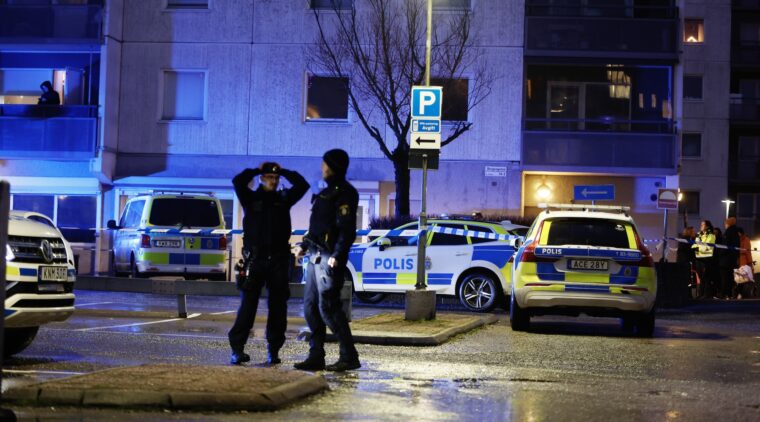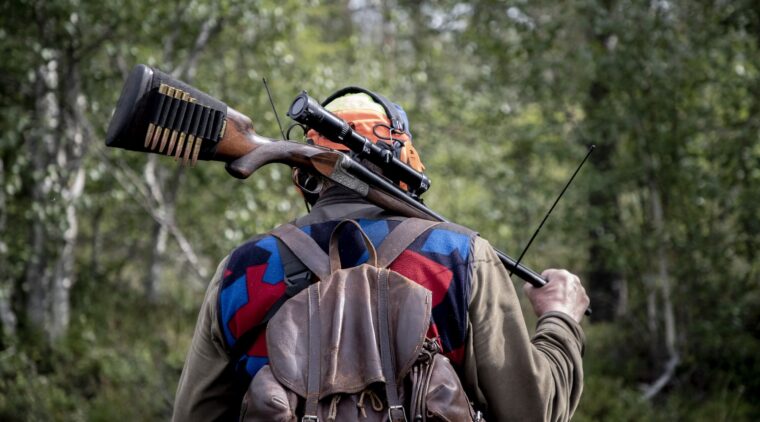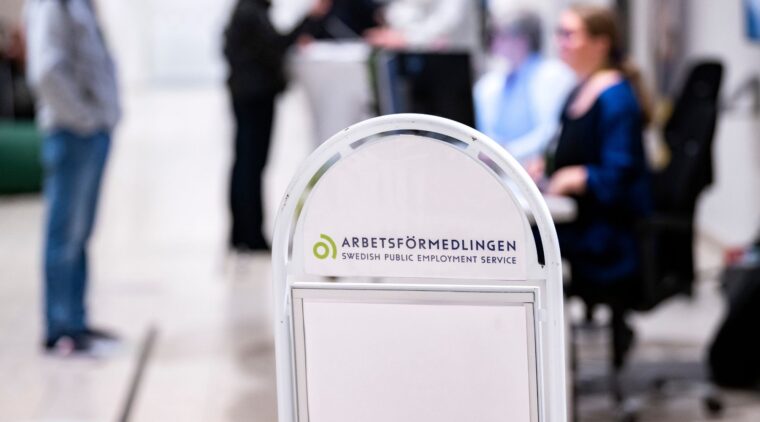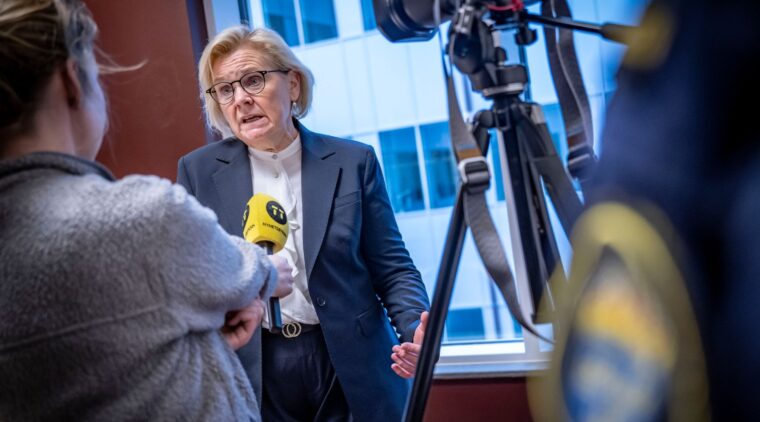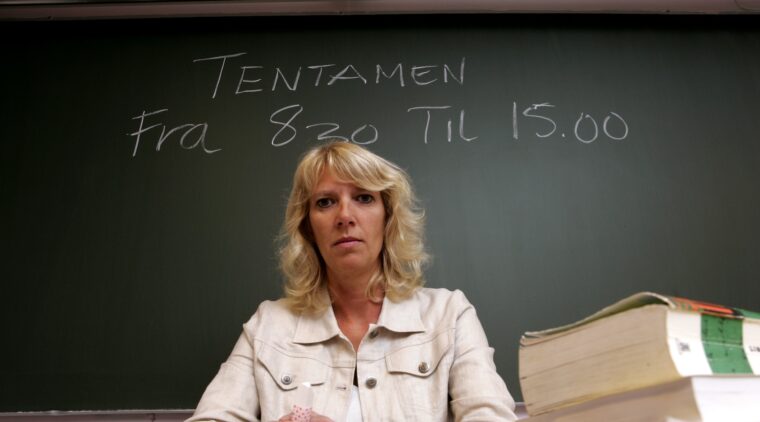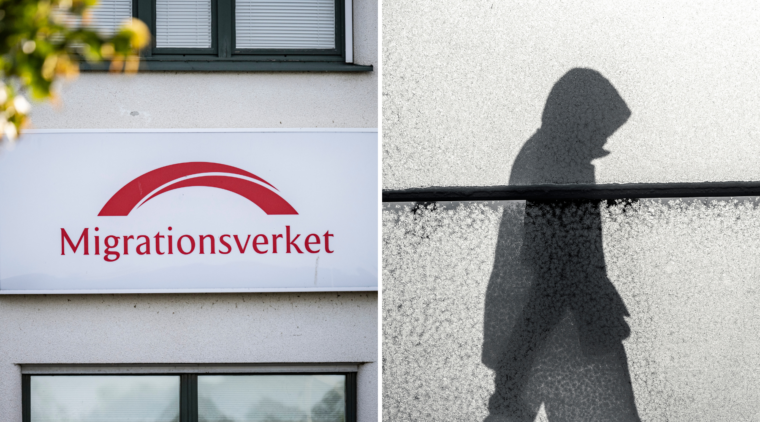»Raoul Wallenberg var Fånge nr 7«
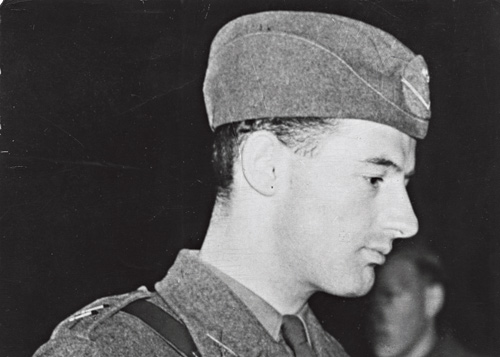
Bild: Scanpix
Lubjankafängelset i Moskva, den 23 juli 1947. Enligt officiella uppgifter har det gått sex dagar sedan Raoul Wallenberg dog i fängelset. En vakt antecknar i registret att säkerhetstjänstens S Kartasjov förhör den intagne Vilmos Langfelder och hans cellkamrat Sandor Katona under sexton timmar. Under samma utdragna timmar, från två på natten fram till följande kväll, hör Kartasjov även en »Fånge nr 7«. Vid olika tider mellan sex och sju på kvällen förs de tre fångarna förbi vakten igen.
De här knappa uppgifterna utgör i själva verket sensationell information i den mest uppmärksammade utrikespolitiska händelsen i modern svensk historia. Två av världens främsta forskare i fallet Wallenberg – Susanne Berger, oberoende rådgivare till svensk-ryska arbetsgruppen för Raoul Wallenberg och Vadim Birstein, expert i samma arbetsgrupp – har efter uthållig bearbetning av ryska myndigheter fått fram nya uppgifter. Informationen visar att »Fånge nr 7« kan ha varit Raoul Wallenberg vilket skulle innebära att han fortfarande levde den 23 juli 1947.
– Det här är första gången som ryska myndigheter uppger att Raoul Wallenberg kan ha varit i livet efter den 17 juli 1947, säger hon.
All information om Raoul Wallenbergs öde har tidigare vilat på att han skulle ha avrättats i Lubjankafängelset den 17 juli 1947. Det datumet uppgavs i det så kallade Gromykos memorandum och har sedan dess stått oemotsagt och kommit att accepteras som hans dödsdag. Konsekvensen av de nya fynden är att den här uppgiften måste ifrågasättas.
– Uppgifterna skulle innebära att Gromykos memorandum är obsolet. De ryska myndigheterna har nu visat en ny öppenhet och om det bekräftas är det det mest spektakulära som har kommit från Ryssland de senaste femtio åren, säger Susanne Berger.
Nu har den ryska säkerhetstjänsten FSB i ett brev angett dels att »Fånge nr 7« i registret från Lubjankafängelset var en av dem som hördes den 23 juli 1947, dels att han »med största sannolikhet« faktiskt var Raoul Wallenberg.
Dessa register har väckt intresse i många år eftersom de berör kretsen närmast Raoul Wallenberg: Vilmos Langfelder var hans chaufför och ska ha arresterats samtidigt, medan Sandor Katona tros ha varit hans cellkamrat vid Lubjankafängelset. Dessutom hördes andra personer som stod Raoul Wallenberg nära redan kvällen den 22 juli 1947.
Hittills har dokumenten varit kraftigt maskerade och uppgifterna om »Fånge nr 7« har tills helt nyligen dolts av de ryska myndigheterna. Originalhandlingen i sin helhet har man emellertid inte lämnat ut, vilket Vadim Birstein beklagar.
– Innan vi får tillgång till den fulla dokumentationen har vi inga bevis för vad som faktiskt hände, säger han.
Vad som närmare hände i Lubjankafängelset den 23 juli 1947 kan inte utläsas ur registret men efter de långa förhören var det ingen av de tre fångarna som satte sin signatur i registret, vilket var brukligt. Den anteckning som står att läsa är i stället »proshel« som betyder något i stil med »har passerat«. Den noteringen förbryllade forskarna men eftersom man dagen efter antecknar i registret att Vilmos Langfelder fick tillbaka sina saker borde det tolkas som att han överlevde förhöret.
– Men en av de utestående frågorna vi vill ha svar på nu gäller om »Prisoner No. 7« (Wallenberg?) och Katona också fick sina saker tillbaka, vilket skulle ha inneburit att de fortfarande var i livet efter förhöret, säger Vadim Bistein.
Om »Fånge nr 7« var Raoul Wallenberg innebär det att det skulle kunna finnas spår av »Fånge nr 7« som skulle kunna utredas ytterligare. Det här öppnar upp vägar ur det som hittills framstått som en återvändsgränd. Om Raoul Wallenberg inte avled den 17 juli 1947 står frågorna om när, var och hur han dog fortfarande obesvarade.
Brevet till Raoul Wallenbergs släktingar (The letter to the relatives of Raoul Wallenberg)
Här är ett utdrag ur det brev som Susanne Berger och Vadim Birstein skickat till Raoul Wallenbergs släktingar.
Dear Mrs. Von Dardel, dear Marie and Louise --
We are writing to you to share the information enclosed below. As you know, over the last few years, we have continued an often slow but productive exchange with the archives of the Federal Security Services of the Russian Federation (FSB). The latest round of discussions, in November 2009, have yielded a resounding surprise. In a formal reply to several questions regarding Russian prison interrogation registers from 1947, FSB archivists stated that "with great likelihood" Raoul Wallenberg became "Prisoner No. 7" in Moscow's Lubyanka prison some time that year. The archivists added that "Prisoner No. 7" had been interrogated on July 23, 1947 which - if confirmed - would mean that the Soviet era claims of Wallenberg's death on July 17, 1947 are no longer valid. Never before have Russian officials stated the possibility of Raoul Wallenberg's survival past this date so explicitly.
The Swedish Ambassador, Tomas Bertelman, and his staff responded quickly to the new information. In a letter addressed to Yuri Trambitsky, head of the FSB's Central Archive, dated December 9, 2009, Bertelman asked Mr. Trambitsky for clarification, writing that "if this hypothesis is confirmed, it will be . . . almost sensational."
We have also sent a detailed follow-up request to FSB officials, asking for more precise information about "Prisoner No. 7," including procedural details pertaining to the assignment of numbers to prisoners under investigation, as well as possible steps to be taken to verify "Prisoner No. 7's" identity and his fate after July 23, 1947. So far, Russian officials have not presented any additional information for their claim that "Prisoner No. 7" could be identical with Raoul Wallenberg.
We stress that an in-depth verification of the new information has to take place before any final conclusions can be drawn, but if indeed confirmed, the news is the most interesting to come out of Russian archives in over fifty years.
Here now some further details:
The new information concerns a previously unknown "Prisoner No. 7" who was questioned on July 23, 1947, for more than 16 hours. The interrogation was conducted by S. Kartashov, head of the 4th Department, MGB's (State Security Ministry) Third Main Directorate (military counterintelligence). This was the unit which investigated Raoul Wallenberg in 1947. Over those 16 hours, Kartashov also interrogated Wallenberg's driver, Vilmos Langfelder and Langfelder's presumed cellmate, Sandor Katona. In the letter, Russian officials refer to a notation in the Lubyanka interrogation registry entered behind the names of all three men which reads “proshel”, “came through” (the prison’s checking post.) The archivists write that regarding Prisoner No. 7, "with high probability the note . . . could apply only to Raoul Wallenberg." We are waiting to see the full interrogation list from July 23, 1947, which has so far only been available in strongly censored form. It is becoming clearer, however, why that documentation may have been withheld all these years.
The full reasons for FSB archivsts' conclusion that Raoul Wallenberg may be identical with the Prisoner No. 7 who was interrogated in Lubyanka on July 23, 1947 remains unclear. There exists, however, strong circumstantial evidence in support of such an assessment. Since the discovery in 1991 of Wallenberg’s transfer document [by Birstein], it has been believed that Raoul Wallenberg had been placed in cell No. 7 in Lubyanka after his move from Lefortovo prison in March 1947 (see Vadim Birstein, "The Secret of Cell No. 7,"Nezavisimaya Gazeta, 1991). These two prisons, Lubyanka and Lefortovo, were the investigation, not punishment, prisons where SMERSH/MGB conducted investigation of their arrestees. Also, Boris Solovov, one of the former interrogators of the 4th Department, MGB's Third Main Directorate, when interviewed by the Working Group in the mid 1990's, stated that Raoul Wallenberg was possibly known as “Prisoner No. 7” under investigation in Lubyanka prison at that time.
Equally important to know is that on July 22 and 23, 1947, almost all of Raoul Wallenberg's former cellmates were also questioned , including Gustav Richter, Walter Schlueter-Scheuer and Willi Rödel (see enclosed table below). Afterwards all of them were placed in severe isolation, often for months at a time. If - as the Russians now suggest - Raoul Wallenberg himself, as “Prisoner No. 7”, was part of this interrogation line-up, it would mean that after 53 years, Russian officials have finally provided information that renders the Soviet claim of the so-called Gromyko Memorandum from 1957, that Wallenberg died on July 17, 1947, invalid. The official explanation for isolating all prisoners who had been in contact with Wallenberg before July 23, 1947 has always been that Wallenberg most likely had died shortly before, on July 17, and Soviet officials wished to erase all traces of his past time in prison. In light of the new information, this rationale will also have to be more closely examined. The letter that Minister of State Security Viktor Abakumov wrote to Soviet Foreign Minister Vyacheslav Molotov on July 17, 1947 too may acquire new meaning. If Prisoner No.7 is Raoul Wallenberg, Abakumov on that day could not have reported Wallenberg's death, but must have outlined instead how he intended to proceed with his case. This can be a reason why the text of the letter has never been released.
What happened to Katona, Langfelder and “Prisoner No. 7” after July 23, 1947 is unclear, but none of the men were ever released. The Russian side has stated that its archives contain no further information about Sandor Katona. Katona, a Hungarian citizen, is known to have been arrested in October 1944 in Bulgaria, where he worked as driver at the Hungarian Legation. The only information available about the further fate of Vilmos Langfelder is a Soviet government communication to Hungary stating that he supposedly died on March 2, 1948. The Soviet or Russian authorities have not presented any documentary evidence for his death. Taking into consideration that at the time, on the Poliburo's order, the KGB released false dates of death of the executed prisoners or prisoners who died during their imprisonment, the stated date of Langfelder’s death is highly questionable.
In this connection, another new piece of information provided by FSB archivists is also of interest. They report that on July 24, 1947, the day after the lengthy interrogation, on the order of Lubyanka prison’s deputy head, Langfelder received his belongings from the prison’s storage, which means that he, possibly, left Lubyanka at that time. As in the case with many other records carrying Wallenberg's and Langfelder’s names in prison registers, this record was blacked out. Here too we are waiting for a copy of the actual document. But if the information is confirmed, it would suggest that Langfelder survived the 16 hour long interrogation ordeal on July 23, 1947. It remains to be seen if Sandor Katona and Prisoner No.7 also claimed their possessions at this time. The Russian side provided no information on this point, and it is one of many questions we have submitted in the follow-up request.
Could the 'Prisoner No. 7' who was interrogated on July 23, 1947 be a different person than Raoul Wallenberg? This possibility cannot be completely excluded. It is very important to understand that the designation of certain prisoners by numbers while under investigation happened usually only for a very limited time, so there could have been several Prisoners No. 7 for the year 1947 under investigation in Lubyanka prison. For example, the Swedish Working Group Report from 2001 states - (in connection with interrogator B. Solovov's remarks about handling a package in 1947 marked "detainee No. 7") - that "[Prisoner] No. 7 has been identified as Russian." (p. 127). The report, however, gives no further details about either the precise timing of this identification, who made it, or whether archivists checked further to confirm the man's personal data and history. We also do not know if this particular "Prisoner No. 7" was ever interrogated on July 23, 1947. That is why the interrogation schedule is vitally important, because it shows that the Prisoner No. 7 interrogated on July 22/23, 1947 must have been at the very least very closely linked to the closest circle of Raoul Wallenberg's fellow inmates. As the FSB archivists have concluded, the man was "most likely" Raoul Wallenberg.
There are numerous testimonies from witnesses who reportedly met or heard of Raoul Wallenberg after 1947 in various Soviet labor camps and prisons. However, there is no information that he or Langfelder had ever been sentenced. Without sentencing they could not be placed in camps or prisons. In light of the new information provided by FSB, these witness reports must receive closer scrutiny. In particular, the many open questions raised in the 2001 Swedish report of the Working Group and by other researchers have to finally be addressed.
It appears that during Russian President Medvedev's visit to Stockholm on November 18, 2009 the Wallenberg case was discussed in general terms, but the issue of "Prisoner No. 7" was not formally mentioned. Nor was the matter raised during the recent return visit by Swedish Foreign Minister Carl Bildt and Prime Minister Fredrik Reinfeldt in Moscow on March 09, 2010. There has been no reply to Ambassador Bertelman's letter as far as we know.
Over these last months, the Russian side has been very helpful, answering many of our questions in great detail. Let us hope that this new information will provide much needed additional impetus for in-depth research and further release of documentation from Russian archives.
With best wishes,
Dr. Vadim Birstein
Susanne Berger
Enclosures:
a. Letter from Swedish Ambassador Tomas Bertelman to Yuri Trambitsky, Chief of FSB Archive Directorate, December 9, 2009;
b. List of Prisoner Interrogations for July 22-23, 1947.
LIST OF PRISONER INTERROGATIONS FOR JULY 22 - 23, 1947
I. Investigator A. Kuzmishin, head, 3rd Section, 4th Department, 3rd MGB Main Directorate
Lefortovo Prison, July 22, 1947
1. V. Langfelder 21:30 to 22:00
2. S.Katona 22:00 to 22:10
3. G. Richter 22:10 to 22:30
4. [B. Rodde] ?
5. E. Pelkonen 22:50 to 23:006. H. Kitschmann 23:00 to 23:20
7. [E. Krafft] ?
8. R. Stahel 23:40 to 24:00
II. Investigator S. Kartashov, head, 4th Department, 3rd MGB Main Directorate
Lubyanka Prison, July 22, 1947
1. Prisoner Number 7 18:50 to 19:25
2. W. Roedel 19:20 to 19:35
3. [O. Hatz] ?
4. W. Schlitter-Scheuer 20:15 to 20:35
5. E. Huber 20:20 to 22:40
III. Investigator S. Kartashov, head, 4th Department, 3rd MGB Main Directorate
Lubyanka Prison, July 23, 1947
1. Prisoner Number 7 1:50 to 18:30
2. V. Langfelder 2:15 to 18:30
3. S. Katona 2:35 to 18:30
Mer information finns på Raul Wallenbergs släktingars officiella hemsida.
De här knappa uppgifterna utgör i själva verket sensationell information i den mest uppmärksammade utrikespolitiska händelsen i modern svensk historia. Två av världens främsta forskare i fallet Wallenberg – Susanne Berger, oberoende rådgivare till svensk-ryska arbetsgruppen för Raoul Wallenberg och Vadim Birstein, expert i samma arbetsgrupp – har efter uthållig bearbetning av ryska myndigheter fått fram nya uppgifter. Informationen visar att »Fånge nr 7« kan ha varit Raoul Wallenberg vilket skulle innebära att han fortfarande levde den 23 juli 1947.
– Det här är första gången som ryska myndigheter uppger att Raoul Wallenberg kan ha varit i livet efter den 17 juli 1947, säger hon.
All information om Raoul Wallenbergs öde har tidigare vilat på att han skulle ha avrättats i Lubjankafängelset den 17 juli 1947. Det datumet uppgavs i det så kallade Gromykos memorandum och har sedan dess stått oemotsagt och kommit att accepteras som hans dödsdag. Konsekvensen av de nya fynden är att den här uppgiften måste ifrågasättas.
– Uppgifterna skulle innebära att Gromykos memorandum är obsolet. De ryska myndigheterna har nu visat en ny öppenhet och om det bekräftas är det det mest spektakulära som har kommit från Ryssland de senaste femtio åren, säger Susanne Berger.
Nu har den ryska säkerhetstjänsten FSB i ett brev angett dels att »Fånge nr 7« i registret från Lubjankafängelset var en av dem som hördes den 23 juli 1947, dels att han »med största sannolikhet« faktiskt var Raoul Wallenberg.
Dessa register har väckt intresse i många år eftersom de berör kretsen närmast Raoul Wallenberg: Vilmos Langfelder var hans chaufför och ska ha arresterats samtidigt, medan Sandor Katona tros ha varit hans cellkamrat vid Lubjankafängelset. Dessutom hördes andra personer som stod Raoul Wallenberg nära redan kvällen den 22 juli 1947.
Hittills har dokumenten varit kraftigt maskerade och uppgifterna om »Fånge nr 7« har tills helt nyligen dolts av de ryska myndigheterna. Originalhandlingen i sin helhet har man emellertid inte lämnat ut, vilket Vadim Birstein beklagar.
– Innan vi får tillgång till den fulla dokumentationen har vi inga bevis för vad som faktiskt hände, säger han.
Vad som närmare hände i Lubjankafängelset den 23 juli 1947 kan inte utläsas ur registret men efter de långa förhören var det ingen av de tre fångarna som satte sin signatur i registret, vilket var brukligt. Den anteckning som står att läsa är i stället »proshel« som betyder något i stil med »har passerat«. Den noteringen förbryllade forskarna men eftersom man dagen efter antecknar i registret att Vilmos Langfelder fick tillbaka sina saker borde det tolkas som att han överlevde förhöret.
– Men en av de utestående frågorna vi vill ha svar på nu gäller om »Prisoner No. 7« (Wallenberg?) och Katona också fick sina saker tillbaka, vilket skulle ha inneburit att de fortfarande var i livet efter förhöret, säger Vadim Bistein.
Om »Fånge nr 7« var Raoul Wallenberg innebär det att det skulle kunna finnas spår av »Fånge nr 7« som skulle kunna utredas ytterligare. Det här öppnar upp vägar ur det som hittills framstått som en återvändsgränd. Om Raoul Wallenberg inte avled den 17 juli 1947 står frågorna om när, var och hur han dog fortfarande obesvarade.
Brevet till Raoul Wallenbergs släktingar (The letter to the relatives of Raoul Wallenberg)
Här är ett utdrag ur det brev som Susanne Berger och Vadim Birstein skickat till Raoul Wallenbergs släktingar.
Dear Mrs. Von Dardel, dear Marie and Louise —
We are writing to you to share the information enclosed below. As you know, over the last few years, we have continued an often slow but productive exchange with the archives of the Federal Security Services of the Russian Federation (FSB). The latest round of discussions, in November 2009, have yielded a resounding surprise. In a formal reply to several questions regarding Russian prison interrogation registers from 1947, FSB archivists stated that ”with great likelihood” Raoul Wallenberg became ”Prisoner No. 7” in Moscow’s Lubyanka prison some time that year. The archivists added that ”Prisoner No. 7” had been interrogated on July 23, 1947 which – if confirmed – would mean that the Soviet era claims of Wallenberg’s death on July 17, 1947 are no longer valid. Never before have Russian officials stated the possibility of Raoul Wallenberg’s survival past this date so explicitly.
The Swedish Ambassador, Tomas Bertelman, and his staff responded quickly to the new information. In a letter addressed to Yuri Trambitsky, head of the FSB’s Central Archive, dated December 9, 2009, Bertelman asked Mr. Trambitsky for clarification, writing that ”if this hypothesis is confirmed, it will be . . . almost sensational.”
We have also sent a detailed follow-up request to FSB officials, asking for more precise information about ”Prisoner No. 7,” including procedural details pertaining to the assignment of numbers to prisoners under investigation, as well as possible steps to be taken to verify ”Prisoner No. 7’s” identity and his fate after July 23, 1947. So far, Russian officials have not presented any additional information for their claim that ”Prisoner No. 7” could be identical with Raoul Wallenberg.
We stress that an in-depth verification of the new information has to take place before any final conclusions can be drawn, but if indeed confirmed, the news is the most interesting to come out of Russian archives in over fifty years.
Here now some further details:
The new information concerns a previously unknown ”Prisoner No. 7” who was questioned on July 23, 1947, for more than 16 hours. The interrogation was conducted by S. Kartashov, head of the 4th Department, MGB’s (State Security Ministry) Third Main Directorate (military counterintelligence). This was the unit which investigated Raoul Wallenberg in 1947. Over those 16 hours, Kartashov also interrogated Wallenberg’s driver, Vilmos Langfelder and Langfelder’s presumed cellmate, Sandor Katona. In the letter, Russian officials refer to a notation in the Lubyanka interrogation registry entered behind the names of all three men which reads “proshel”, “came through” (the prison’s checking post.) The archivists write that regarding Prisoner No. 7, ”with high probability the note . . . could apply only to Raoul Wallenberg.” We are waiting to see the full interrogation list from July 23, 1947, which has so far only been available in strongly censored form. It is becoming clearer, however, why that documentation may have been withheld all these years.
The full reasons for FSB archivsts’ conclusion that Raoul Wallenberg may be identical with the Prisoner No. 7 who was interrogated in Lubyanka on July 23, 1947 remains unclear. There exists, however, strong circumstantial evidence in support of such an assessment. Since the discovery in 1991 of Wallenberg’s transfer document [by Birstein], it has been believed that Raoul Wallenberg had been placed in cell No. 7 in Lubyanka after his move from Lefortovo prison in March 1947 (see Vadim Birstein, ”The Secret of Cell No. 7,”Nezavisimaya Gazeta, 1991). These two prisons, Lubyanka and Lefortovo, were the investigation, not punishment, prisons where SMERSH/MGB conducted investigation of their arrestees. Also, Boris Solovov, one of the former interrogators of the 4th Department, MGB’s Third Main Directorate, when interviewed by the Working Group in the mid 1990’s, stated that Raoul Wallenberg was possibly known as “Prisoner No. 7” under investigation in Lubyanka prison at that time.
Equally important to know is that on July 22 and 23, 1947, almost all of Raoul Wallenberg’s former cellmates were also questioned , including Gustav Richter, Walter Schlueter-Scheuer and Willi Rödel (see enclosed table below). Afterwards all of them were placed in severe isolation, often for months at a time. If – as the Russians now suggest – Raoul Wallenberg himself, as “Prisoner No. 7”, was part of this interrogation line-up, it would mean that after 53 years, Russian officials have finally provided information that renders the Soviet claim of the so-called Gromyko Memorandum from 1957, that Wallenberg died on July 17, 1947, invalid. The official explanation for isolating all prisoners who had been in contact with Wallenberg before July 23, 1947 has always been that Wallenberg most likely had died shortly before, on July 17, and Soviet officials wished to erase all traces of his past time in prison. In light of the new information, this rationale will also have to be more closely examined. The letter that Minister of State Security Viktor Abakumov wrote to Soviet Foreign Minister Vyacheslav Molotov on July 17, 1947 too may acquire new meaning. If Prisoner No.7 is Raoul Wallenberg, Abakumov on that day could not have reported Wallenberg’s death, but must have outlined instead how he intended to proceed with his case. This can be a reason why the text of the letter has never been released.
What happened to Katona, Langfelder and “Prisoner No. 7” after July 23, 1947 is unclear, but none of the men were ever released. The Russian side has stated that its archives contain no further information about Sandor Katona. Katona, a Hungarian citizen, is known to have been arrested in October 1944 in Bulgaria, where he worked as driver at the Hungarian Legation. The only information available about the further fate of Vilmos Langfelder is a Soviet government communication to Hungary stating that he supposedly died on March 2, 1948. The Soviet or Russian authorities have not presented any documentary evidence for his death. Taking into consideration that at the time, on the Poliburo’s order, the KGB released false dates of death of the executed prisoners or prisoners who died during their imprisonment, the stated date of Langfelder’s death is highly questionable.
In this connection, another new piece of information provided by FSB archivists is also of interest. They report that on July 24, 1947, the day after the lengthy interrogation, on the order of Lubyanka prison’s deputy head, Langfelder received his belongings from the prison’s storage, which means that he, possibly, left Lubyanka at that time. As in the case with many other records carrying Wallenberg’s and Langfelder’s names in prison registers, this record was blacked out. Here too we are waiting for a copy of the actual document. But if the information is confirmed, it would suggest that Langfelder survived the 16 hour long interrogation ordeal on July 23, 1947. It remains to be seen if Sandor Katona and Prisoner No.7 also claimed their possessions at this time. The Russian side provided no information on this point, and it is one of many questions we have submitted in the follow-up request.
Could the ’Prisoner No. 7’ who was interrogated on July 23, 1947 be a different person than Raoul Wallenberg? This possibility cannot be completely excluded. It is very important to understand that the designation of certain prisoners by numbers while under investigation happened usually only for a very limited time, so there could have been several Prisoners No. 7 for the year 1947 under investigation in Lubyanka prison. For example, the Swedish Working Group Report from 2001 states – (in connection with interrogator B. Solovov’s remarks about handling a package in 1947 marked ”detainee No. 7”) – that ”[Prisoner] No. 7 has been identified as Russian.” (p. 127). The report, however, gives no further details about either the precise timing of this identification, who made it, or whether archivists checked further to confirm the man’s personal data and history. We also do not know if this particular ”Prisoner No. 7” was ever interrogated on July 23, 1947. That is why the interrogation schedule is vitally important, because it shows that the Prisoner No. 7 interrogated on July 22/23, 1947 must have been at the very least very closely linked to the closest circle of Raoul Wallenberg’s fellow inmates. As the FSB archivists have concluded, the man was ”most likely” Raoul Wallenberg.
There are numerous testimonies from witnesses who reportedly met or heard of Raoul Wallenberg after 1947 in various Soviet labor camps and prisons. However, there is no information that he or Langfelder had ever been sentenced. Without sentencing they could not be placed in camps or prisons. In light of the new information provided by FSB, these witness reports must receive closer scrutiny. In particular, the many open questions raised in the 2001 Swedish report of the Working Group and by other researchers have to finally be addressed.
It appears that during Russian President Medvedev’s visit to Stockholm on November 18, 2009 the Wallenberg case was discussed in general terms, but the issue of ”Prisoner No. 7” was not formally mentioned. Nor was the matter raised during the recent return visit by Swedish Foreign Minister Carl Bildt and Prime Minister Fredrik Reinfeldt in Moscow on March 09, 2010. There has been no reply to Ambassador Bertelman’s letter as far as we know.
Over these last months, the Russian side has been very helpful, answering many of our questions in great detail. Let us hope that this new information will provide much needed additional impetus for in-depth research and further release of documentation from Russian archives.
With best wishes,
Dr. Vadim Birstein
Susanne Berger
Enclosures:
a. Letter from Swedish Ambassador Tomas Bertelman to Yuri Trambitsky, Chief of FSB Archive Directorate, December 9, 2009;
b. List of Prisoner Interrogations for July 22-23, 1947.
LIST OF PRISONER INTERROGATIONS FOR JULY 22 – 23, 1947
I. Investigator A. Kuzmishin, head, 3rd Section, 4th Department, 3rd MGB Main Directorate
Lefortovo Prison, July 22, 1947
1. V. Langfelder 21:30 to 22:00
2. S.Katona 22:00 to 22:10
3. G. Richter 22:10 to 22:30
4. [B. Rodde] ?
5. E. Pelkonen 22:50 to 23:006. H. Kitschmann 23:00 to 23:20
7. [E. Krafft] ?
8. R. Stahel 23:40 to 24:00
II. Investigator S. Kartashov, head, 4th Department, 3rd MGB Main Directorate
Lubyanka Prison, July 22, 1947
1. Prisoner Number 7 18:50 to 19:25
2. W. Roedel 19:20 to 19:35
3. [O. Hatz] ?
4. W. Schlitter-Scheuer 20:15 to 20:35
5. E. Huber 20:20 to 22:40
III. Investigator S. Kartashov, head, 4th Department, 3rd MGB Main Directorate
Lubyanka Prison, July 23, 1947
1. Prisoner Number 7 1:50 to 18:30
2. V. Langfelder 2:15 to 18:30
3. S. Katona 2:35 to 18:30
Mer information finns på Raul Wallenbergs släktingars officiella hemsida.

